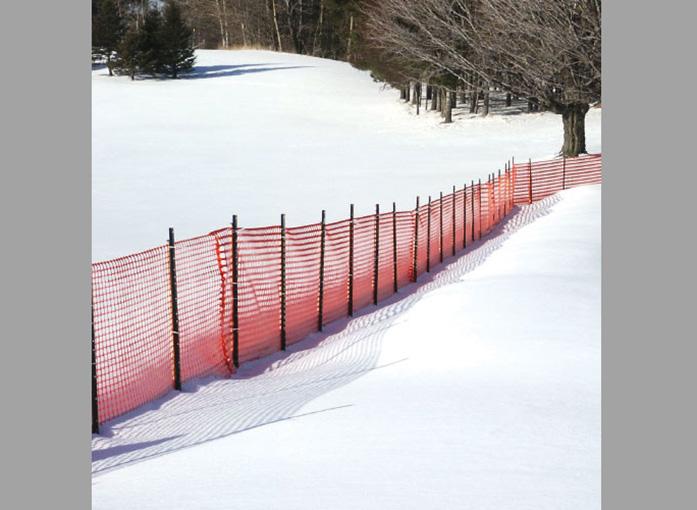By Dot Armstrong
As any Midwesterner knows, battling winter weather on the highway can be deadly. The winding back roads cutting across the exhausted heart of farm country transform into terrifying ice sculptures as December rolls around.
Iowa’s flat, over-farmed profile is notorious for winter accidents. Monoculture cultivation creates hazardous driving conditions, not to mention soil erosion and loss of animal habitat. To contend with these issues, farmers should construct standing corn and living snow fences to ensure safer, clearer roadways.
Standing corn and living snow fences repurpose cornstalks and prairie plants into eco-friendly, low-cost blockades against wind and snow. Snow fences made from organic materials provide many advantageous features. They lower accident risk by shielding vehicles from blowing precipitation, increase visibility on the highway, and preserve pavement by reducing the amount of freeze-thaw degradation from snow buildup. Additionally, organic snow fences combat soil erosion and act as snow-storage facilities while cutting snow-removal costs and offering shelter to overwintering animals.
The Iowa Department of Transportation recommends three different types of snow fences. The structural snow fence is exactly what the name suggests: a plain, old, board blockade. It’s a tried-and-true model in dire need of an update. The more innovative options — standing corn and living fences — repurpose environmental elements to shelter the road.
A standing corn snow fence provides a complement to Iowa’s relentless monoculture. By simply leaving the season’s dead stalks vertical in the field, farmers can create an effective and easy barricade, provided the corn is planted parallel to the road eight to 16 rows deep as recommended by the Iowa DOT, the fierce prairie wind will force the snow into the corn rows rather than onto the road and across unsuspecting drivers’ windshields.
A study published in 2006 by the Iowa DOT confirmed the effectiveness of this construction. “Results from the three winters of testing show that the standing corn snow fences can store as much snow within the rows of standing corn as a traditional fence of typical height for operation in Iowa (4 to 6 feet) can store.”
Corn fences, however, concede to the dysfunction of single-crop cultivation. Living snow fences offer much more durable and biodiverse options for long-term snow protection.
A living snow fence, otherwise known as a windbreak, consists of plants such as prairie grasses, shrubs, and trees sturdy enough to withstand winter weather over their growth period. Windbreaks function similarly to corn fences and boast comparable storage capacity. This permaculture-style barricade warrants a lot of planning and rearranging of existing farmland for an aesthetically pleasing and low-maintenance result. Because the plants will construct a permanent landscape barrier, the fence must be installed with growth patterns in mind. The living-fence materials must not only be oriented parallel to the road, they also must achieve a certain height so as to effectively block the predicted precipitation.
Preparation is only the beginning; if sufficient funding and planning are initially provided, the living fence demonstrates numerous advantages over time. The Minnesota DOT mentions specific environmental benefits: “Depending upon the type of living snow fence selected, grassland nesting birds and pollinator habitat is improved to create an oasis for those species to survive and thrive … [living fences] control soil erosion and reduce spring flooding by keeping soil sediment out of the ditches to maintain proper drainage.” The utility of living fences extends beyond winter-weather mediation. Midwest-wide adoption of living fences could encourage a healthier outlook on land use in all seasons.
Any snow fence is a benefit to drivers navigating backcountry blizzards, but the living snow fence offers the most eco-friendly features. The planning and planting pays off in the long term. Permaculture-style snow barriers are the ideal method of highway protection.



